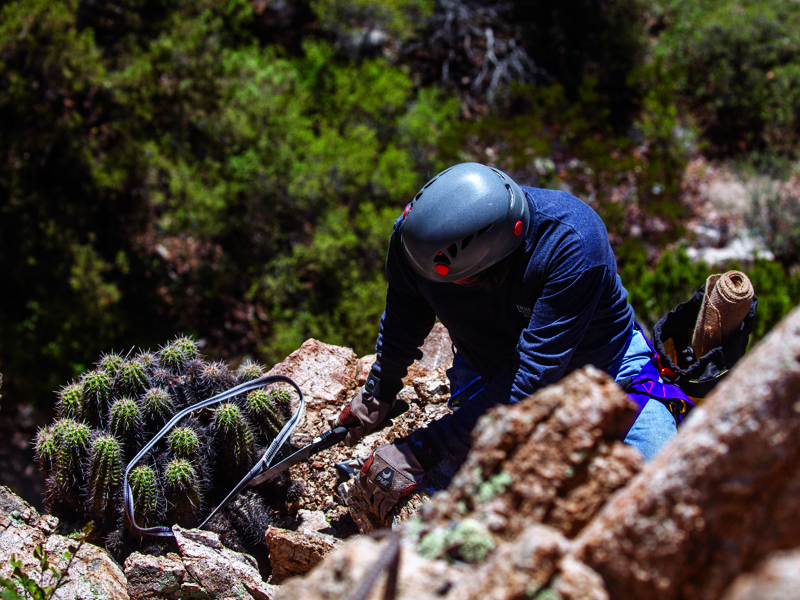Endangered Species Day
When we think an endangered species, it’s easy to envision a bald eagle, whale or giant panda. However, did you know that there are more federally protected plant species than animals in the United States?
Why protect plants? Could you imagine the Sonoran desert without the emblematic Saguaro cactus? The Mojave desert without the Joshua tree? The California forests without the giant sequoias and redwoods. No? Neither can the animals that rely on them. Bats, hummingbirds, owls and squirrels all rely on these species for sustenance, shelter and nesting.
Endangered Species Day is celebrated yearly around the world in an effort to share information on threatened and endangered species and to explore how to help them. This year we celebrate Endangered Species Day on May 21.
In the United States, threatened and endangered species are listed by the U.S. Fish and Wildlife Service (FWS) under the Endangered Species Act of 1973 (ESA). Individuals and organizations can petition for a species to be added to the list. The FWS thoroughly investigates the petitions and determines whether an organism should be listed. This protects precious habitat the species need to survive and opens up new conservation opportunities. The ESA is incredibly effective at protecting species and species are regularly removed from the list when their populations have recovered. In a time when there is unprecedented biodiversity loss across the globe, the ESA is certainly something to be celebrated.
Below are several federally endangered species that the Garden is helping protect and care for:
Huachuca water umbel
Lilaeopsis schaffneriana var. recurva
Huachuca water umbel (Lilaeopsis schaffneriana var. recurva) is one of the rarest species in our collection and is limited to only a few remaining locations in Arizona. It grows only in the wetlands, which are some of the most threatened habitats in Arizona. Although this plant looks like a grass, it is actually in the carrot family. You can see this amazing little plant growing around the pond along the Plants and People of the Sonoran Desert Loop trail.

Arizona Hedgehog
Echinocereus arizonicus
Arizona hedgehog cactus (Echinocereus arizonicus) is a special cactus that grows only in the central part of Arizona. Their flowers are a vibrant crimson red that can be spotted all along the US 60 between Superior and Globe. In 2018, the Garden worked in collaboration with the Arizona Department of Transportation to salvage a large number of these plants that were in the path of a new bridge over Pinto Creek currently under construction. The plants were brought back to the garden to be allowed to rehabilitate before they are eventually returned to the wild upon completion of the bridge.

Photo: Eirini Pajak
Florida semaphore cactus
Consolea corallicola
The Garden also acts as a backup collection holder for other botanical gardens. The Florida semaphore cactus is an endangered species from the Florida Keys and is now limited to only two remaining populations. To top it off, this plant only produces male flowers, making it so it cannot reproduce sexually but only vegetatively when its pads fall on the ground. The Garden has been working in partnership with Fairchild Botanical Garden to act as the backup caretaker for the plant. Our collection serves as an insurance policy against catastrophic events such as Hurricane Irma that hit the Fairchild in 2017.

Monarch butterfly
Danaus plexippus
Not only does the Garden work directly work to conserve plants, it also works to conserve the animals that depend on these plants for survival. With native plants in peril, so too are species that depend on them. One example is the iconic monarch butterfly whose populations have plummeted nationwide due to loss of breeding and overwintering habitat. Western monarch butterflies (overwinter in California) are down 99.9%. This winter, there were fewer than than 2,000 monarchs in California, compared to 30,000 last year and millions 20 years ago. This year, after a rigorous scientific review, FWS decided that ESA protection for monarchs was warranted but precluded by other species. Essentially, listing monarchs under the ESA is on hold while other species in more dire straits are protected. The Garden will continue to support monarchs, regardless of their listing, through our Great Milkweed Grow Out initiative. The best thing the monarch butterfly has going for it is the number of people interested in saving this charismatic species. By planting butterfly habitats and supporting the Garden’s efforts, we collectively move in the right direction.

This is only a small sample of the work being done to conserve endangered species here at the Garden. Although the goal of Endangered Species Day is to celebrate and bring awareness to those species formally listed under the federal Endangered Species Act, there are also many more endangered species that are not listed. They are no less worthy of protection and the Garden will continue to conserve them as long as they need our help.
To learn more about endangered species and the work being done to protect them, visit:
https://www.fws.gov/endangered/
https://www.worldwildlife.org/pages/the-us-endangered-species-act

